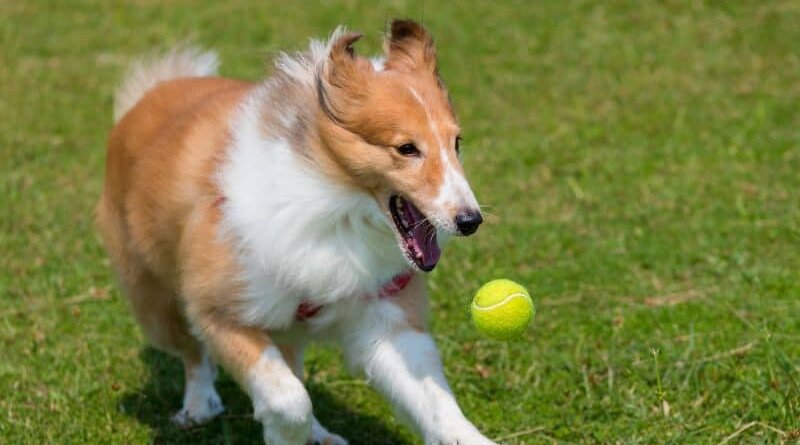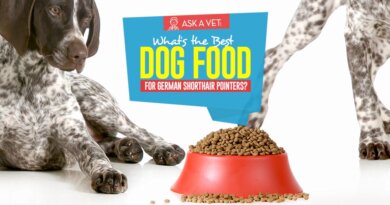Are There Dog Training Rewards Other Than Food?
This post may contain affiliate links. We may earn money or products from the companies mentioned in this post.
Your pup loves performing obedience cues for yummy treats.
But you wonder whether you’re giving too many and if there are other dog training rewards other than food. Yes! There are!
In this blog post, I’ll describe what other ways you can use to reward your dog when training.
And each dog’s an individual so what motivates one dog might not motivate another.
But you know your dog. And you can try different ways to reward him and see what works the best.
Why Should You Try To Use Rewards Other Than Food?
For most healthy dogs, food is a very powerful motivator. So when you reward your dog with a treat after he sits, he will sit the next time, anticipating another.
By using rewards other than food, you become more important to the dog.
In many of the rewards other than food that I discuss below, such as playing with your dog, you become a central part of his reward. You become fun!
There are many reasons to phase treats out and to use other reinforcers sometimes. These include:
To Ensure that Your Dog Doesn’t Become Overweight
The Association for Pet Obesity Prevention estimated in 2022 that about 59 percent of dogs were overweight.
That’s a frightening estimate, as being overweight or obese can greatly affect the quality of your dog’s life. And his life expectancy.
It’s simple math: feeding too many treats or those with too many calories will lead to your pup being overweight.
Luckily, there are many other ways to reward him.
Your Dog May Not Be Food-Motivated–or Be Motivated More in Alternate Ways
I know this sounds strange. But some dogs aren’t as motivated by treats as others.
Some breeds, like labs, pugs, and beagles will usually inhale any treat presented. But some herding dogs, working dogs, and terriers may not be as food-driven.
Although my Aussie mix Millie loves good treats, she finds playing fetch much more rewarding. So, if there’s an opportunity to play, she ignores a treat altogether.
When I’m training her and she can safely run after her favorite ball, I’ll have her do various behaviors–sit, down, stand, spin, speak, dance, or touch–before I throw the ball. Here’s a video of Millie performing those behaviors for a ball:
She’s ecstatic just chasing and retrieving her Kong ball. Even if I offer her a treat, she ignores it and would rather play.
You May Have Caused Food To Be a Negative
Inadvertently, you may have caused your dog to have a negative experience with treats.
This can occur when a treat is given and something negative occurs afterward, such as a nail trim or bath.
In the dog’s view, food then predicts something scary happening.
You Might Not Always Be Carrying a Treat
If you depend on always rewarding a dog with food, you would need to always carry it. And there will be times when you won’t have a yummy enough treat on you for your pup to be rewarded.
But there will always be another type of reward, which I discuss below, that you can give your dog.
A Dog Can Become Too Dependent on Treats
A dog may become so dependent on treats that he won’t listen to you if you don’t have any.
Treats Are Expensive
Food rewards that dogs love are often costly–especially if that’s all you use to reward your pup.
The Dog May Not Be Hungry
If your pup isn’t hungry–such as after he’s eaten a meal–a food treat may not be enticing or effective to reward him.
The Dog Might Be Ill
If a dog’s not feeling well, a food treat may not be appealing.
The Dog May Not Like the Treat You Provide
Sometimes treats aren’t enforcing to a dog because the treat isn’t as high-value as it could be. So use a high-value meat, cheese, or fish treat.
When Should You Give Rewards Other Than Treats?
After a dog reliably performs a behavior–even with normal distractions–you can use other types of rewards too.
Just be sure that you don’t go from all treats (or rewards) to none or most dogs will be totally unmotivated.
- Random Treat Reinforcement Schedule. First, go to a random reinforcement schedule where you give treats less and less frequently. So if your dog sits whenever you use the “sit” cue, have him sit the first time without a treat. Then ask him to sit again and give a treat. Vary when he gets the treat. Sometimes give him the treat the first time he sits. Then on the third time. You get the idea.
- Various Non-Treat Rewards. You can reward with things and activities that your dog enjoys other than treats. For most dogs, I advise still using treats randomly occasionally. But, if you reward your dog with something he enjoys other than food, his behaviors will still remain strong. Just discover what motivates your pup.
Whenever going to a random reinforcement schedule, reward less and less frequently. But don’t stop all rewards or your dog will stop working.
You want to make sure that he reliably maintains the behavior.
For example, if your dog sits reliably even with distractions on walks, you can start randomly rewarding him with treats. And you can start to phase in other types of rewards.
So you might give a treat the first time he sits. Then praise him the third.
And what your dog finds to be more rewarding will change in different situations. If he’s in a playful mood, of course play will be a very powerful motivator.
Let’s discuss the many other ways you can reward him.
Rewards Other Than Food
There are so many ways to reward our dogs that we do without even realizing it. So let’s discuss some of them.
Attention
Does your dog ever paw you or bark at you for attention? Most dogs love to get attention from their pet parents.
Attention can mean many things. Here I’m just referring to looking at your pup in a friendly manner.
The Pet Parent’s Positive Body Language
Dogs are great at reading our body language. So if you have positive body language and aren’t tense, your dog will read that you’re pleased with him.
This can even include a smile where a dog is used to seeing you smile when you’re happy.
Touching and Petting
Many dogs love a scratch under the chin or a pet along the side of his face. Some love tummy rubs.
Learn what your dog likes. Then that can be one of his many rewards.
Being a touch-feely golden retriever, Riley loves to be petted.
And he’s not shy about letting someone know. He’ll put his big, blocky head on your knee if you forget. So petting is a great reward for him.
Riley Soliciting Petting
However, my Lhasa Ralphie doesn’t love to be petted–especially by strangers.
Although he’s good with handling and will tolerate it, it’s just not his favorite thing. So I don’t pet him as one of his rewards. But he loves praise.
Ralphie sitting for praise
But I note that not all dogs love being touched. Or they might not like being petted in a certain way.
Many dogs learn to accept being petted on the top of the head (after all, it’s what many people do), but many don’t like it. So that type of petting usually shouldn’t be used to reinforce a desired behavior.
If you’ve had your dog a while, you probably know what type of petting he likes–and what he doesn’t.
If you’re not sure, look for the following signs that he’s uncomfortable and stressed:
- Freezing
- Lip licking
- Whale eye (where the whites of the eyes show)
- Drooling
- Yawning
- Ducking his head
Praise
When I’m training, I pair a verbal marker (“yes”) with a treat. But, as I phase treats down, I will sometimes just use the verbal marker as a reward.
Play
Many dogs like my Aussie mix Millie love to play–often more than food rewards. So play can be a very powerful motivator.
Millie waiting for her reward ball for spinning, lying down, and sitting on cue
I know many people who, when training their dogs, will intersperse the training with tugging on a toy or fetching.
When I train my golden Riley, I play tug as a reward after he performs a behavior like sit/stay or come.
I would release him from the stay, then wave the long soft toy around and tell to tug. He also has a “give” cue when he releases the toy.
Or when he comes to me, the toy appears and we play tug.
Doing this sometimes actually improved his impulse control. It’s like an on-off switch from the tug to the stay.
And the interaction will improve your bond. And Riley really looks forward to training. Let the games begin!
Life Rewards
There are many ways we reward our dogs that involve every-day activities that they like.
So if you have your dog sit by the door before going for a walk, he sees the walk as his reward (assuming he likes walks).
When I take my golden Riley for a car ride, which he loves because he knows we’re going somewhere fun, I have him sit before he gets in the van.
He automatically sits even without a cue now. He’s anticipating his reward of going to the pet store or dog class.
Riley loves activities and, being a golden, can’t wait to encounter more people to pet him and give him much-deserved attention.
Life rewards can include many events, including:
- Going outside and playing
- Going for a walk
- Playing in a sprinkler
- Going on a sniffari
- Freedom of movement
So there are many ways that you can use life rewards in everyday situations.
If your dog is really excited about going outside for a walk or to play in a yard, have him sit/stay first. Then, you can tell him to go out on your cue.
The reward is his freedom to roam or to go on a walk with you.
Before I go out to play with my dogs in the backyard, I have them sit sometimes. Their reward is going out to sniff and play.
If you’re on a walk and your pup is pulling to reach something, you can stop walking.
When he stops pulling and settles, walk again and stop if he begins pulling again. You can praise him each time he stops pulling.
Another type of life reward you can give sometimes for not pulling is to walk quickly ahead to what he was attempting to reach, such as a tree.
Only do this when it’s safe and appropriate to do so. Don’t let him rush up to other people or animals.
How To Use Life Rewards
I’ve given some examples of how to use rewards other than treats. Let’s delve into the subject in more depth.
Each dog’s an individual. When you use non-food rewards depends on your individual dog.
This depends on how far your dog is along in his training. And you have to use non-food motivators that he enjoys.
Before going to non-food rewards, I’ve found it best to go to a random treat schedule. So after he knows a behavior on cue such as “sit,” for example give him treats randomly:
- Say “sit,” praise and give a treat and release him from the sit
- Say “sit” again and just praise when he sits (then release)
- The third time, say “sit,” and say nothing after he sits (then release)
- On the fourth time, after he sits on cue, give a treat, then release him
Over time, start phasing treats out more and more. Don’t do it too quickly, or your dog will become demotivated.
You notice I’ve used praise as part of his reinforcement.
When adding other non-food reinforcers, first make sure that your dog reliably performs the behavior before switching to a non-food-based reward.
So if your dog will sit each time you say “sit,” even with distractions on a walk, you can start to phase in other rewards.
For example, you can do the following to reward your dog for sitting on cue:
- The first time, praise him when he sits (and release)
- For the second sit, pet the side of his face (and release)
- For the third sit, say nothing (and release)
- For the fourth sit, give him a treat (then release)
- For the fifth time, say nothing before releasing him
- For the sixth sit, release him to tug or fetch a favorite toy
Once you find non-food reinforcers that your dog values as much as food, you can wean treats down (slowly) even further.
My sheltie Gracie loves certain games we play. I’ve made it a game to nose target to my hand.
So when we’re heeling, I’ll sometimes cue her to “touch” my palm that’s about a foot above her head. She’ll touch, then go back into heeling.
It’s cute because she’s so perky and prances while she’s heeling. It’s a fun game for her.
And it’s a reinforcer I can use any time because it doesn’t require a treat.
You can use these non-food rewards to reinforce many behaviors, including tricks.
So use them for attention, sit, down, stay, shake hands, leave it, come, loose leash walking–and more.
The sky’s the limit! You just have to be sure that the activity or item you use in place of food is really valued by your dog.
FAQs
My dog’s gaining too much weight because of all the training treats I give her. What can I do?
Start weaning down the treats slowly and use other reinforcers, including praise and play.
My dog loves to fetch. How can I use this in training?
You can first phase treat rewards down, then give your dog a behavior cue like “sit.” Release him to fetch his favorite toy before telling him to sit again.
My dog loves attention from me. Can this be used to have him sit?
Yes! You can use looking at him and praise as reinforcers for his behaviors.
Final Thoughts
There are many ways to reward your dog other than food. Just discover what your dog loves. Then you can reward him for good behavior with that activity or item.
Do you use rewards other than food when training your dog? Tell us about it in the comments section below.
Save To Pinterest
Top Picks For Our Puppies
- BEST PUPPY TOY
We Like: Calmeroos Puppy Toy w/ Heartbeat and Heat Packs – Perfect for new puppies. Helps ease anxiety in their new home. - BEST DOG CHEW
We Like: Mighty Paw Naturals Bully Sticks – All of our puppies love to bite, nip, and chew. We love using Bully Sticks to help divert these unwanted behaviors. - BEST DOG TREATS
We Like: Crazy Dog Train-Me Treats – We use these as our high-value treats for our guide dog puppies. - BEST FRESH DOG FOOD
We Like: The Farmer’s Dog – A couple months ago we started feeding Raven fresh dog food and she loves it! Get 50% off your first order of The Farmer’s Dog.
Check out more of our favorites on our New Puppy Checklist.




